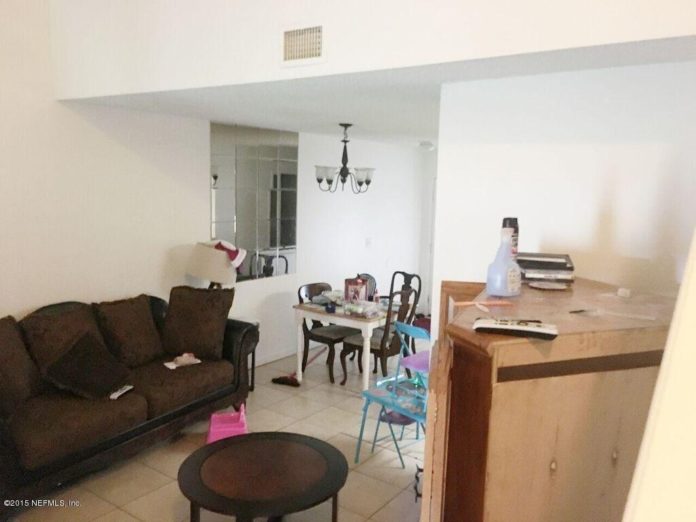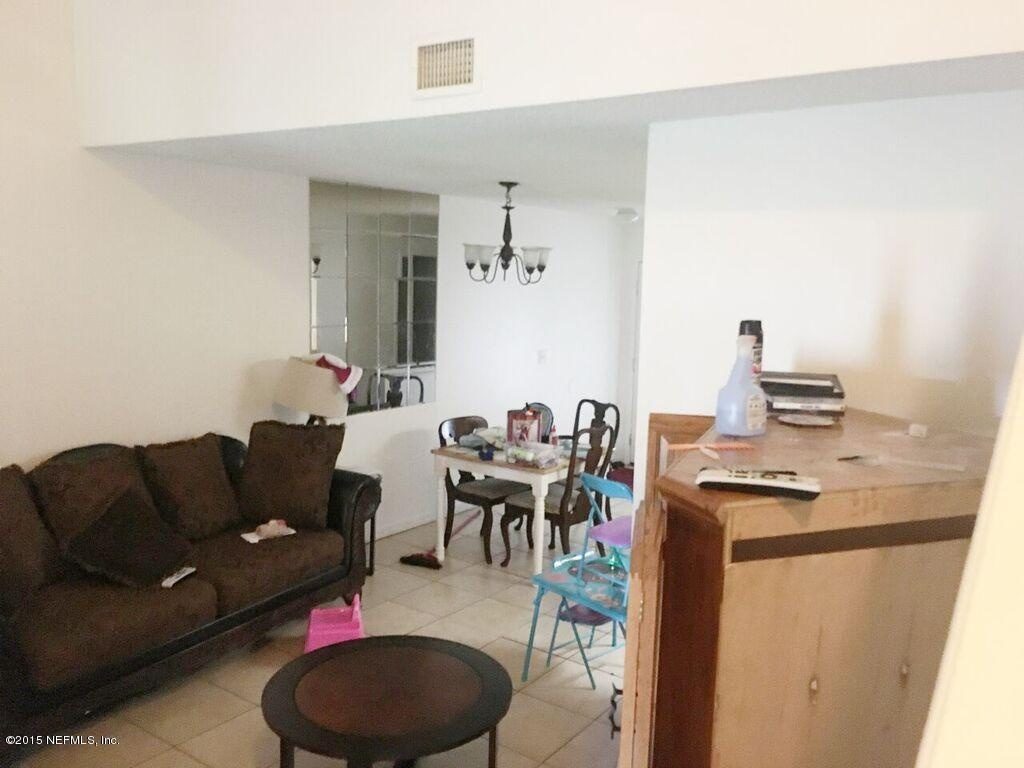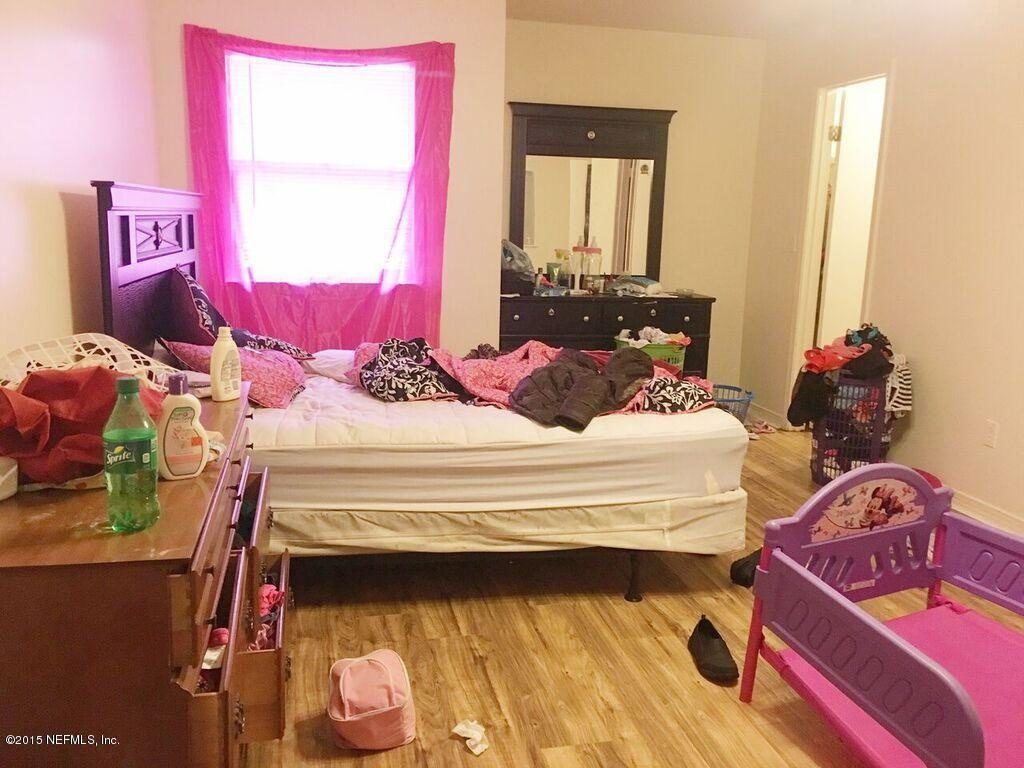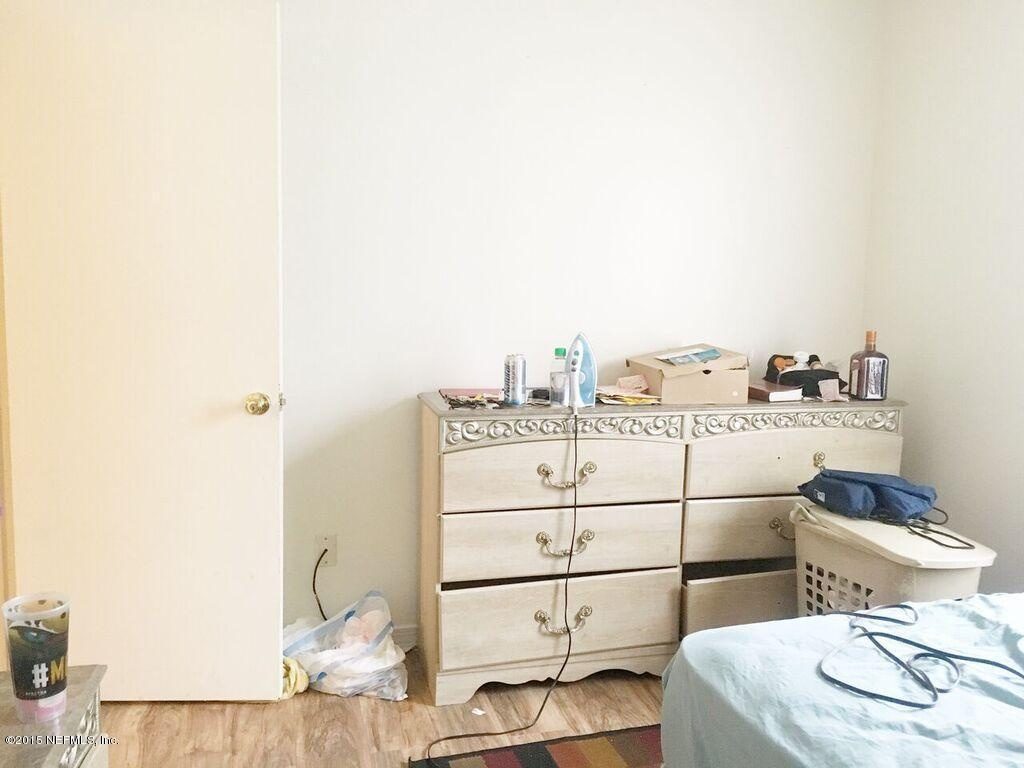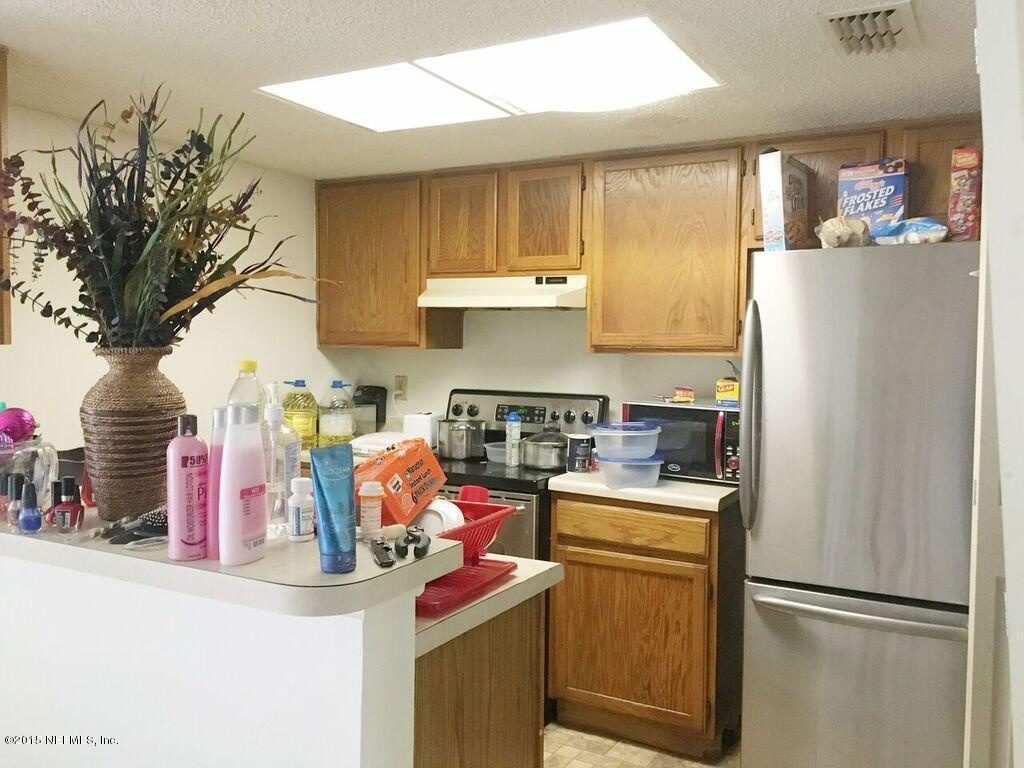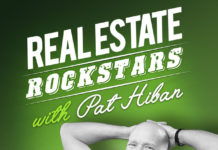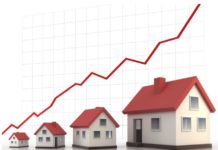The Details
Allow me to introduce Jana Lane, a two story townhouse in Jacksonville Florida. Jana Lane has 1,030 square feet, 2 bedroom, 2 bathrooms, and was in very good shape. It is currently tenant occupied with significant room to raise rents. The property was purchased through a wholesaler who already had the property under contract.
As this was my first time buying a property in Florida, I flew to the area and drove the location to get an idea for the kinds of tenants that would be living there, the condition of the properties, and the economic base.
Upon driving the area, I noticed that while it looked like a typical tenant filled neighborhood, I was happy to see lots of children playing together outside, no signs of major deferred maintenance, lawns that were well kept, no signs of drug, gang, or overt criminal activity, and no cars stored on front lawns that appeared non-operable. All encouraging signs.
As I looked closer at the area, I noticed that within a block of the property was single family residential zoned housing. While the area I was looking at was primarily townhomes, very close by were nice looking single family homes that looked like they were primarily owned by owner occupants-a favorable zoning situation.
Near to the area was several shopping centers, grocery stores, and an industrial area. The roads were in good repair, the yards were well maintained, and the area appeared to be economically stable-all encouraging signs.
Once I determined I was ok with the area, I turned my attention to the property itself. My wholesaler was able to gain access to the property earlier that week and took several pictures of the interior. The property was surprisingly clean with no clutter, no messes, no stains, mold, mildew or damage. If you’re new to real estate investing, I can assure you this is not the norm. In order to find a “deal”, we usually have to buy a property nobody else wants. This often means a mess. Part of being a good investor is learning how to clean up other people’s messes. In this case, however, the property was rent ready upon purchase and needed zero repairs (I do plan to make some upgrades to the property but that will come at a later date when the property is vacant).
The fact the property needed zero repairs meant I did not need to budget anything towards making it rent ready, decreasing the amount of time before I could collect rent to zero!
In addition to needing no immediate work, the property was already occupied by a tenant paying $700 a month. A quick search of the expected rents for the area revealed a property the same size in good condition could expect to rent for $700-850 a month. The property manager I met with stated the target rent would be $800. This was supported by comps from rental websites and craigslist.
The asking price of the property was $40,000. One of the catches is, it is highly unlikely to find a owner occupant to buy a property like this if I ever want to sell. The low purchase price makes it almost impossible to get a loan. If you are going to buy a property like this, expect to have to hold it for a long period of time. This is a cash flow play, and anytime you are making a move strictly for cash flow you can expect you won’t receive much in the way of appreciation or an easy resale. In my case I was fine with this.
Crunching The Numbers
A run down of the expenses of the property produced the following information:
Property Taxes= $40
Insurance= $26
Management Fees= $63
Vacancy= $35
Repairs= $35
Mortgage= $95
Total = $294
At current rental rates ($700), this gives me an expected monthly cash flow of $406.
A little more research revealed the property was being sold along with another one on the same street. The owner was asking $40,000 for each. By offering to buy both in a bundle deal, the owner agreed to sell each property for $35,000.
The properties were purchased all cash, 14 day close, 10 day inspection period, with a $2000 earnest money deposit on each (The sister property, also on Jana Lane, will be dissected in next weeks update of the Greene Investment Newsletter). These are very strong terms and contributed to the lower sale price being accepted.
The Loan
I was able to secure a mortgage on the property for $24,000 from a local bank at an interest rate of 4.75%. When taking into account the $8,000 I put down, with a monthly cash flow of $406, this works out to a cash on cash return of 61%! While I am happy with this return, it is important to note that cash flow is virtually my only benefit to this property as appreciation and ease of resale are not likely to be factors in a property of this type. Another factor to consider is if I’m able to raise rents to $800 a month, I can expect a cash on cash return of 75%.
If you’re into cap rates, the cap rate would be 14 at current rents.
A lot remains to be seen about this area, the tenant base, the vacancy rates, and the headache factor (a factor there is no column for in a spreadsheet). I’ll be sure to keep you updated with how it goes, but at this point I am hesistantly optimistic about the possible returns in the area and more deals to be found!
What I Learned On This Deal
As this was my first purchase in a new state (Florida), my learning curve was unusually high. Some mistakes were made, but that is to be expected anytime you are doing something new. A few of the notable things I learned:
- Florida requires surveys to be done before a loan can be given. This was an unexpected cost I didn’t anticipate. The price is typically $300-400. This is in addition to the appraisal I had to pay for and the inspection I chose to pay for.
- The property tax was about $10 a month more than I anticipated. This is a small amount in the big picture, but it is wise to note why it was higher, as the next property may be more expensive and lead to a more significant discrepancy in the insurance amount. It turns out hurricane’s are something Florida insurance underwriters must factor into their claim algorithm. This leads to a higher likelihood of new roof and exterior repair claims and a higher overall premium.
- Contrary to popular belief, there aren’t alligators everywhere in Florida.
- There are townhomes in Florida with no HOA’s. Being a Californian, this was a bit of a shocker to me, but I liked it.
- Wholesalers can be assets, they aren’t all sleezy!
- I found a new, good inspection man who gave me good feedback and an honest assessment. He’ll be a strong asset for future acquistions.
- I found what I hope to be a good property management company who can handle a lot of the details and follow my system once I’ve developed it and passed it on to them. As usual, I am relying on them for boots-on-the-ground experience and as a consultant on the area and expected rents.
- People overall in Florida are just much nicer than the west coast. Kinda weird.
- Jacksonville Florida is the largest city by geographical square footage in the United States.
In Summary
- If you are hoping for massive appreciation, don’t expect great cash flow. Conversely, if you are buying for the cash flow (like this case) it’s difficult to also get good appreciation. Know what the strengths and weakness of your purchase are, and have a plan for how to incorporate that into your strategy. In my case, I have several properties I expect more appreciation in and I am purposely looking for properties to provide strong cash flow with minimal money down.
- If one is good, two is better. Maximize your negotiating leverage by sweetening the deal for the seller by purchasing more than one property from them if possible.
- Economies of scale-By purchasing two identical properties in the same neighborhood, I am able to come up with ONE design/upgrade plan and execute it twice. This cuts my planning, phone calls, thinking, and emailing time in half.
- Drive the area you are looking to buy in to make sure it’s a strong rental area.
- Crunch the numbers of your investment to make sure it makes financial sense to buy. Remember, when buying for cash flow, you are not buying a property-you are buying an income stream.
- Get inspections on anything you’re purchasing. A small investment considering the overall picture.
- Trust your gut, but not just your gut. Cross-reference your information over several mediums and sources to make sure several people all agree on the facts you are using to determine if you should buy or not.
Takeaway Tips
- If you’re unfamiliar with an area (as I was here) take time to drive it and get a feel for where the property is. For more information on how to know what to look for in a new area you’re considering investing in, see the blog post “What to look for when investing in a new area” by clicking here)
- If you’re lacking on information, or are having trouble finding deals that work, don’t keep looking for deals-look for someone who can find them (in my case, the wholesaler).
- If you can buy a property that makes sense at the current rent, good. If there is room to drive rents higher, even better. Always look for the value-add component to create wealth. Prepare for worst case scenario but plan for best case scenario.
- Cross reference your information over several mediums. For rent use 1. Property Managers 2. www.rentometer.com 3. www.Craigslist.com. For price comps use 1. Realtors in the area 2. Online sites like Zillow. 3. My KW app to see what nearby homes are selling for (email me to get a free copy if you don’t have one).
- If you can’t pay as much for a property, consider stronger terms. If you can’t offer strong terms, consider paying a little more. Nobody likes someone who asks for the world but doesn’t give back in return. Learn to bend and you won’t be broken.
- Get several bids for any construction work and offer multiple jobs to the crew if possible. You can get a better deal on the work if you can give them a higher volume of work.

